
































Today’s blog I will like to start with a Facebook post (Treasureside.com), shared by a woman who lost her baby during delivery. The mother used social media to convey her gratitude to all the compassionate nurses.
In her ‘thank you’ letter, she shared all the loving and compassionate acts they displayed during her trauma. Here are a few of her expressions of appreciation toward the nurses:

The post is dedicated to not just one or two compassionate nurses; but a full team of caring individuals who seemed to work together in fully embracing a devastated family’s emotional, psychological, and physical needs. These skills go well beyond medical training; they reflect a depth of understanding and sensitivity that is the epitome of kindness, generosity, and love.
If you want others to be happy, practice compassion. If you want to be happy, practice compassion. Dalai Lama

The Dalai Lama refers to the emotional benefits of compassion to both the giver and recipient.
Compassion is not an automatic response to another’s plight; it is a response that occurs only when the situation is perceived as serious, unjust and relatable. It requires a certain level of awareness, concern and empathy.
Importance of Compassion in our toady’s hectic life

It is extremely painful to feel compassion as it requires empathy for others and at the same time it is equally essential to create positive action.
Compassion and empathy are fundamental components of our personality for quality relationships as they enable kind and loving behavior. Hence our associations in volunteer activities has been associated with positive result like increased academic aspirations and self-esteem among adolescents
Compassion has two elements: showing compassion for others and also self-compassion which is an important for well-being. However in this stressful time we often find people who are unable to forgive themselves for various unpleasant incidents of their lives.
Where in when we condition ourselves to see beyond our flaws and treat ourselves with forgiveness and understanding, our psychological health and well-being increases.
In extensive studies on Compassion have shown self -compassion is more beneficial than self-esteem. It strongly enhances emotional resilience without fostering some of the negative aspects associated with self-esteem by researchers.

In 2018 a 17-year long study on HIV patients were concluded by the researchers Ironson, Kremer, & Lucette. They found out that practicing compassion for others and being self compassionate towards oneself are the predictors of longer survival. This finding is shows the power of compassion.
The power of compassion is essential within the medical field as patients feel pain, anxiety and fear. In such a situation handling their emotions helps them to both heal and cope with the situation.
8 Proven Benefits of Compassion

Self-compassion reduces burnout and fosters important adaptive qualities among medical professionals. It buffers the negative impact of stress.
Self-compassion: have a number of proven psychological benefits, such as reduced PTSD symptom severity. Self-compassion is linked to more positive aging.
Patient-reported clinician empathy and compassion is related to increased patient satisfaction and lower distress.
Voluntary Associations: Compassion expressed as a function of service work is related to improved health and well-being among volunteers

While some of us behave more consistently compassionate than others due to our conditioning as compare to others and compassion is teachable. However there needs to be a structured series of intervention to do so.
Naturally, teaching compassion should begin with young children in order to inculcate empathy, compassion, and kindness at a time when personalities and beliefs are still developing.
Positive Psychology Coaching on Compassion

The field of positive psychology “is founded on the belief that people want to lead meaningful and fulfilling lives, to cultivate what is best within themselves, and to enhance their experiences of love, work, and play” (International Positive Psychology Association in Donaldson, Dollwet, & Rao, 2014, p. 2).
Positive psychology focuses on the promotion of positive emotions, traits, and behaviors that ultimately foster positive well-being. Well-being was the most prevalent topic studied field of positive psychology since 1999.
One to mention is Donaldson’s colleague’s study in 2014 on compassion which was spread across 46 countries. The researchers reported a number of studies indicating that compassion and gratitude were predictors of increased well-being with scientific evidence.
Additionally, mindfulness was the most frequently researched intervention, and intensive mindfulness training. It increases several positive outcomes, including self-compassion.
There are numerous proven benefits of both self-compassion and compassion toward others, such as increased happiness, improved medical outcomes, reduced stress, reduced psychopathology, and increased social connection.
If you wish discover the power of Self Acceptance with Compassion, you could book an individual, or group Coaching session ‘ Rediscover Your Purpose’. It’s an innovative, comprehensive session focusing on both self-compassion and compassion toward others, such as increased happiness, improved medical outcomes, reduced stress, reduced psychopathology, and increased social connection.
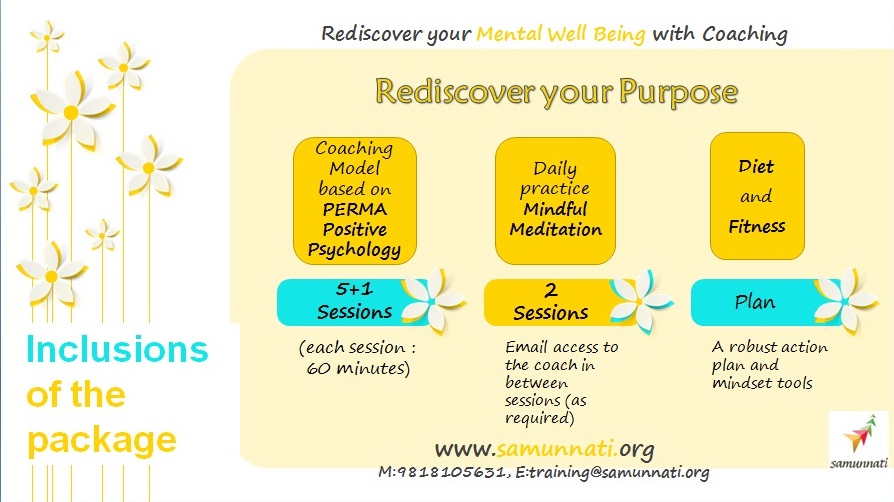
We organize well being workshops/webinar, group counseling sessions @ organizations, There are many ways in which individuals/ groups/ teams can practice compassion such as by being altruistic, avoiding judgment, being grateful, to create a productive workplace.
Connect with us @ 9818105631 email us @training@samunnati.org
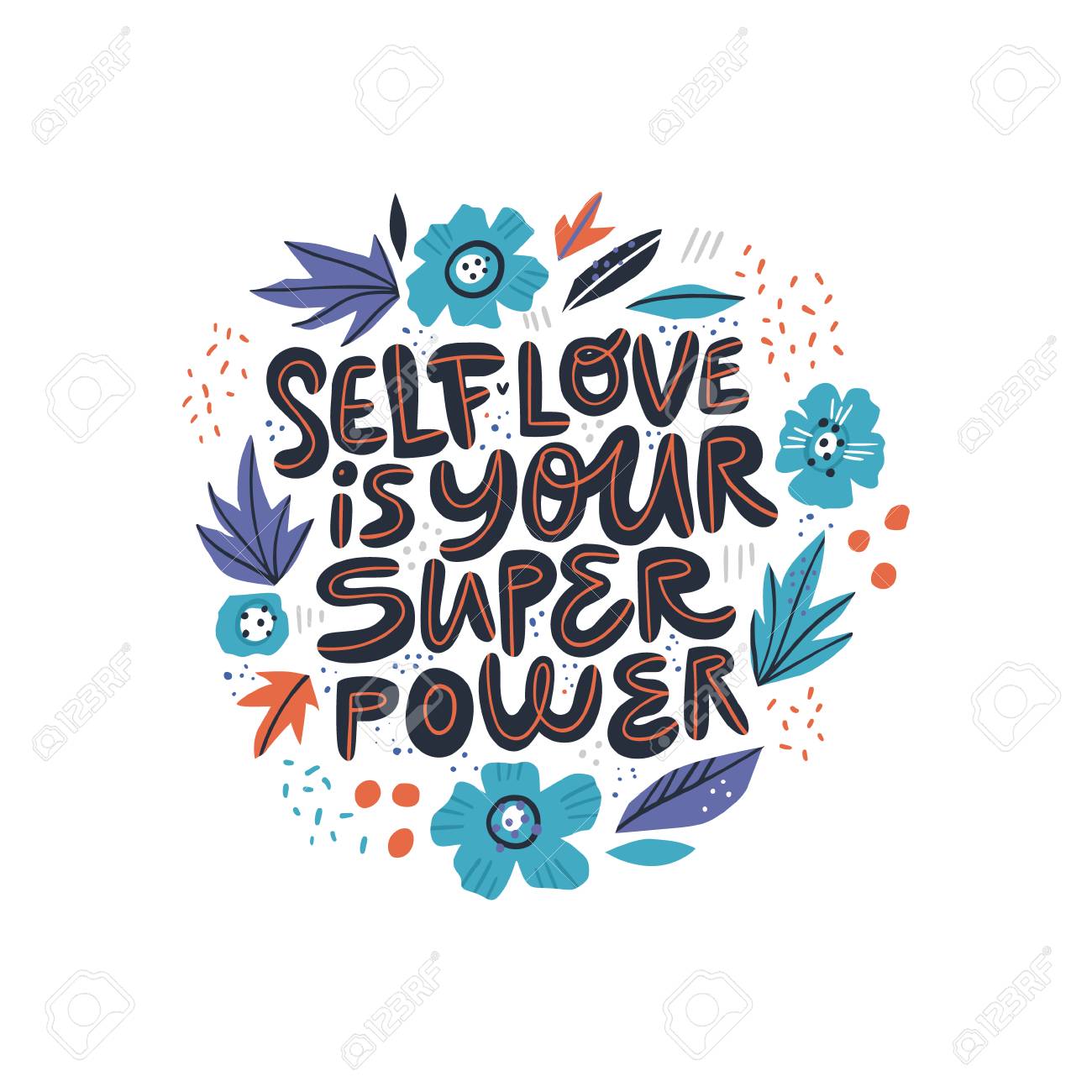
Our most important partner in our life is ‘me’ and we often spend more time in understanding others wherein we must focus on creating a positive relationship with ourselves.
Relationship with myself
We all have a specific explanatory style, which decided how we view the world around us which includes day to today situation, relationships, definitions of life like success, failure, happiness etc.
In our growing up stage we often get conditioned by our parents, community, society, religion, and place where we reside. All these aspects condition ourselves and builds our value system. In this process we often take over the values which are being transferred by all of them\ and make our blue print of viewing the world.
Why values are important?
Values are set of guidelines which help us to scan the situation, relation, events and life journey. For instance it is the value system which decides whether ‘I am a successful person or a failure’ or whether ‘the event in my life is positive or negative.’
Self image and self criticism
The three elements of a person’s self-image are:
However the common problem we all face is Self-criticism. The optimum level of self criticism helps us to improve our areas of improvement but we often fail to control the level and it slowly absorbs us silently.
It’s a problem which should never be overlooked because the way we talk to ourselves play a vital role in well-being. The problem of the self-critic is fixable and needs to replace by Self Love.
Research supporting Self love in Positive Psychology
Researchers Ed Diener and Martin Seligman (2002) conducted a study of both happy and unhappy people to determine what factors set them apart. It turned out that happy people didn’t necessarily exercise more, participate more often in religious activities, or experience more (subjectively) positive life events. The difference between the groups was that happier people had better social relationships.
If you don’t love yourself, you cannot love others. You will not be able to love others. If you have no compassion for yourself then you are not able of developing compassion for others. The Dalai Lama
Definition of self-compassion in Buddhism is ‘offering patience, kindness, and nonjudgmental understanding to others as well as oneself’. It is contrary and not equivalent to selfishness.
Make peace with our inner critic
So the biggest question is how we turn our inner critic inti and supportive narrative? Traditional cognitive skills training have been found rather ineffective in this area.
Positive Psychology coaching in self Love and Compassion
Everybody deserves self love and situations and events which do not happen as per your expectation, we only need to pause and reassess.
Be mindful of the difficult emotions that a rise. There could be events in our life where we need to forgive ourselves and recognize that we can commit mistake.
With growth mindset we redesign ourselves to identify various options of doing differently. Use gratefulness as the opportunity to increase the positive ratio and coping with difficult event ion life.
Finally, accept ourselves that we are not perfect. However there is always scope to be better. We must focus on the areas where we performed fine and that’s more than enough.
Coaching Package
Rediscover your Purpose: to Practice Self-Compassion
The coaching session is complimented with scientific studies, self assessment and positive intervention to have self compassion for better well being.
• Step 1: Practice Forgiveness
• Step 2: Employ a Growth Mindset
• Step 3: Express Gratitude
• Step 4: Find the Right Level of Generosity
• Step 5: Be Mindful
Connect with @ 9818105631 to take coaching session for well being.
Reference: Positive Psychology research of Martin Seligman @ Pen University,U. S.A.
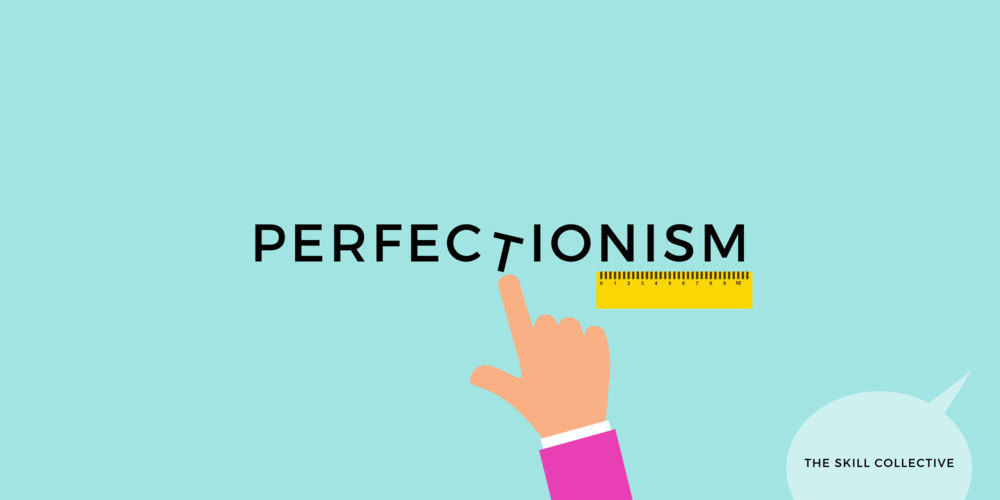 Perfectionism is a personality trait that some people do have, some people don’t have. It’s a complete a continuum in between the two extreme points. You can have a little bit of perfectionism in some areas, and in another you don’t.
Perfectionism is a personality trait that some people do have, some people don’t have. It’s a complete a continuum in between the two extreme points. You can have a little bit of perfectionism in some areas, and in another you don’t.
Usually we associate perfectionism with positive qualities. A person who is a perfectionist has high quality standards, they are not putting out junk, they can be trusted with other people’s projects, they’re going to do a good job. This is all good.
And when we say “I’m a perfectionist” we wear it like a badge of honor (I ore this champion medal for long time).
Perfectionism & Creativity.
Perfectionism can make creating really stressful. One of the reasons is, we want to keep those high standards, don’t want to make mistakes and fear failure more like others. So we tend to name some works of ours as “failures” even though they might have turned out quite all right, but it’s just not the same as we imagined, so we’re disappointed with ourselves.
Study of personalities of creative genius in Positive Psychology
Study 1: by Psychologist and creativity researcher Frank X. Barron
In this study few creative genius where shown certain pictures to understand their creative level and then measured on certain parameter.
All of them scored very high strong sense of self: ego, strength, all components of Positive Psychology, mental illness. Even metrics of non mental health & high IQ level was involved.
In his studies he found out that creative genius may be at once naïve and knowledgeable, being at home equally to primitive symbolism and to rigorous logic. He is both more primitive and more cultured, more destructive, more constructive, occasionally crazier and yet adamantly saner than the average person.
Study 2 : Creative researcher Mihaly Csikszentnihalyi
This is he had to say about his research: “If I had to express in one word what makes their personalities different from others, it’s complexity. They show tendencies of thought and action that in most people are segregated. They contain contradictory extremes: instead of being an individual, each of them is a multitude.”
So the crux of his research is that creative people with ‘messy minds’ but with positiveness. They have their your own goal.
One of the genius mind studied in this research was Picaso the famous painter.
Most commonly we will like to believe that he will have steady growth comparing to his genius capabilities. We think each sketch process goes incrementally high from one after another. This growth is shown in the picture 1.

Source : Positive Psychology program of Martin Seligman
But the actual is not picture 1. This growth is filled with trials, error, up and down as shown in Picture 2.

Source : Positive Psychology program of Martin Seligman
In fact the same goes with other creative genius Einstein, Edison, Shakespeare.
One of the major feature of these creative genius is ‘Openness to experience ‘ is a major factor in creativity. This ensures flexibility and has the caliber to accept erros, failures, faults right next to their perfection.
Experience of Art therapist Ms Rita Pailial in Shimla who works with Perfectionist
She is a coloring book creator, a creativity facilitator, and this what she said about Perfectionism:
“I find myself encountering and engaging perfectionists on pretty much a daily basis. The perfectionism I encounter in my students, my child, my friends, and the colorists who discover my books/workshops/events comes in all different levels.
Some of them
• struggle over what color to choose and uttering “I just don’t want to mess it up with the wrong choice!”.
• Or often saying: “I’m the only one who isn’t getting it!”).
Over this past year of engagement with fellow perfectionists, I have begun noticing trends in their thinking pattern, problem solving, self acceptance level, tackling new situations, and specially if the situation does not go according to their definition of “perfectly.”
Contribution of Dr. Jessica Rohlfing Pryor: core faculty member at Northwestern University’s Counseling Program from The Family Institute.
Perfectionism becomes unhealthy—called maladaptive perfectionism—when there’s an unrealistic attempt at reaching excessively high or impossible goals.
An example of situation shared by her as a maladaptive perfectionism: “Feeling a pressure to be the best at everything. For example, being the number-one student athlete and the valedictorian and getting into the ‘best’ university,” said Pryor. “One person’s ability and energy to obtain, let alone remain at, that level of excellence over a long period of time—that’s impossible to do.”
In a 2017 study, researchers examined perfectionism among college students are high globally over the past three decades and found that three types of perfectionism have increased among recent generations of students.
1. Self-oriented perfectionism: Individuals attach irrational importance to being perfect, hold unrealistic expectations of themselves, and useless self-evaluations.
Associated with: negative physiological reactions to life stress and failure, clinical depression, anorexia nervosa, and suicidal ideation.
2. Socially prescribed perfectionism: Individuals believe their social context is excessively demanding, that others judge them harshly, and that they must display perfection to secure approval.
Associated with: anxiety, depressive symptoms, and suicidal ideation to greater degrees than those with self-oriented perfectionism.
3. Other-oriented perfectionism: Individuals impose unrealistic standards on those around them and evaluate others critically.
Associated with: higher vindictiveness, hostility, and the tendency to blame others, in addition to lower altruism, compliance, and trust.
We are going to organize a workshop on perfectionism ‘Dose of Imperfect @ workplace’. Join us to know the
Webinar Flow
• Root belief system
• Unhealthy Perfectionism @ workplace
• Perfectionism & Making mistake
• Mental well being
• Technique: Pomodoro Technique
Benefit:
• Better teamwork, reduce team conflict , increase productivity, better planning and prioritization management & overall well being
Take Away
• Hear inner voice
• Evidence based action items
• Research based tools
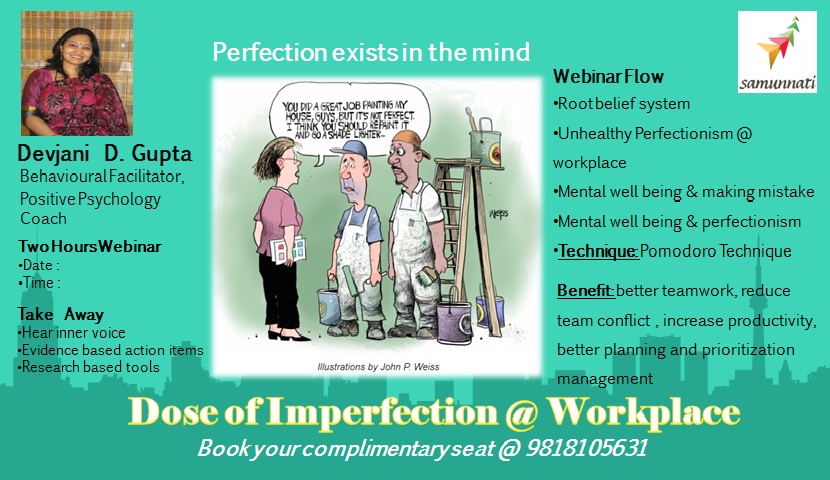
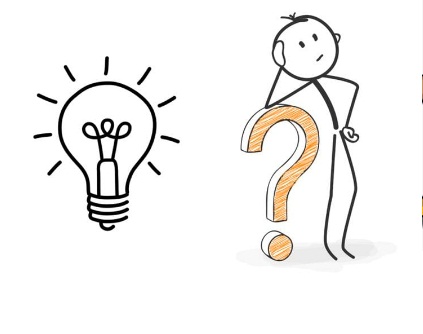
I will begin my today’s blog with some questions which is the base of human flourishing.
How often do we all take time to reflect on these questions and even journal them?
What is Emotional Intelligence?

Emotional intelligence (also called the Emotional Quotient, or EQ) is the ability to monitor our own emotions, emotions of others, understand different emotions and also label these different emotions correctly. Finally these emotions and emotional information guides our thinking pattern, behavior, and relationship with others.
In day to day life we use emotional intelligence ins a simple situations like when we empathize with our coworkers, have deep conversations about our relationships friends , and try to manage an unruly or distraught child. In simple words emotional intelligence helps to cultivate the opportunity of a fulfilled and happy life.
EQ vs. IQ
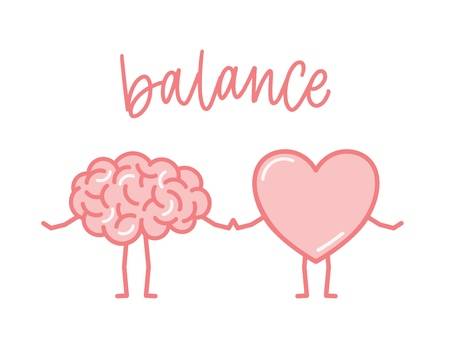
EQ is emotional intelligence, is about identifying emotions in ourselves, others, relating to others, and communicating about our feelings (Cherry, 2018a).
On the other hand IQ, is cognitive intelligence. It is most often referred to when the word “intelligence” is used and often measured through testing and estimated through things like grade-point average.
“It is very important to understand that emotional intelligence is not the opposite of intelligence, it is not the triumph of heart over head–it is the unique intersection of both.” David Caruso
Characteristics of EI
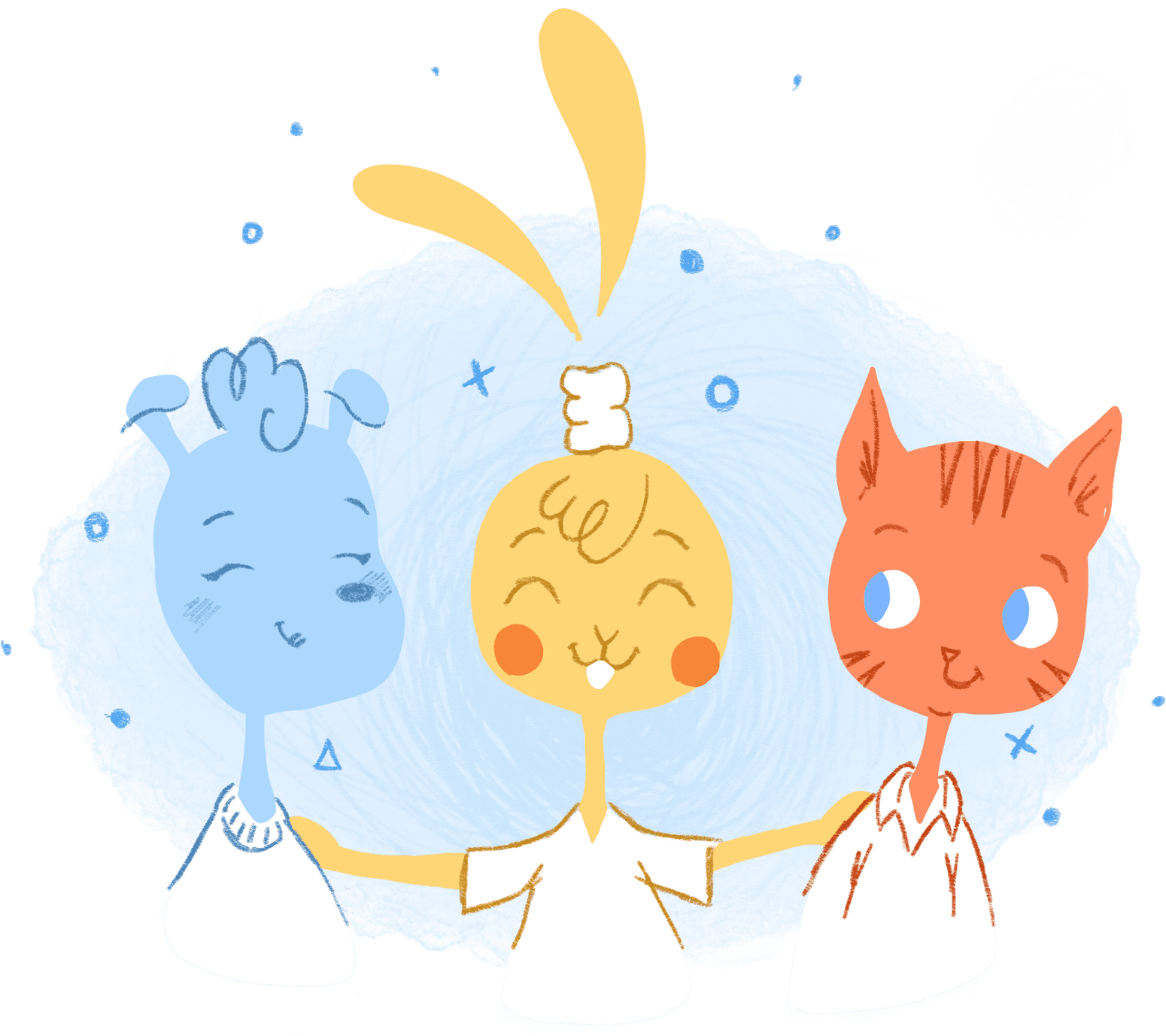
Without going to the academic information of EI , there are many characteristics that describes people high and low in emotional intelligence.
According to Rhett Power (2017), these are the seven qualities that best describe employees and leaders with a high EQ:
Characteristics of people with low emotional intelligence include:
Why is it important to develop Emotional Intelligence Skills?

It is fundamental to understand our emotions and this understanding will lead us to flourishing and more high-functioning role. That’s because as humans, we tend to be highly emotional and social creatures.
Being emotionally intelligent will helps us to connect with others, boost our performance at work, improve our communication skills, become more resilient, and more. It turns out that having a high level of EI can make you successful in just about every aspect of your life however the definition of success in context could need redefinition.
Emotional Intelligence and Communication

EI affects communication: A high EQ leads to competence in conversations, and competence in conversation is a requirement for both a healthy personal life and a healthy professional life.
Those who are high in emotional intelligence:
Communication leads directly to the next reason why it’s important to develop emotional intelligence: building and maintaining healthy relationships
EI in Relationships
It’s easy to see how having a high EQ can lead to better relationships. People high in EQ can:
EI in Workplace

Interesting research on EI on some famous CEOs .
Chip Conley, founder of Joie de Vivre Hospitality and a Stanford Business School graduate, wrote about CEOs who demonstrate high degrees of emotional intelligence. He picked Fortune 500 companies and interviewed employees, studied speeches and published writing, and evaluated what he called the “emotional thermostat” settings of these leaders. Some highlights:
Positive Psychology Coaching

“Emotional healing requires more than simply changing how you feel. Your emotions are merely symptoms of the problem—not the problem itself. Even when they hurt.” Jessica Moore
Now lets take a situation to understand the use of EI in day to day situations at workplace whch is often a problem to handle even for managers or leaders.
Situation: It can be very difficult for many of us to accept criticism, especially if receiving criticism provokes strong emotions (effects ego in this case).
EI can equip : When you accept the criticism that is thrown your way (without actually taking it to heart), we will find that we disarm the person criticizing us.
As a part of positive psychology, emotional intelligence has been a popular segment. Positive psychology coaching uses science-based exercises to measure and at many scales, enhance the ability to understand, work with emotions and will also provide a set of tools to foster the emotional intelligence among students, employees,
It’s worth noting that people with high EQs don’t remove all emotions from their decision-making. This helps them stay more objective while also allowing them to rely on their feelings to a healthy extent.
High emotional intelligence improves decision-making abilities. They have a good understanding of themselves and around them are more likely to view various options, keep an open mind, and remove all irrelevant emotions from the decision-making process (Huffington Post, 2013).
EI Activity: Be the Fog (Regulate Your Emotions)
Situation: Above mentioned.
This simple exercise will help you “be the fog” and learn how to regulate and modulate your emotions in a difficult situation.
Here’s what to do:
“Act like a fog! Imagine you are a fog. When someone throws a stone at you, you absorb that stone without throwing the stone back. This is a very easy and effective technique to use against people who keep criticizing you repeatedly.” (Skills Converged website)
For example, if someone tells you something like:
Respond with:
Connect with us for effective positive psychology coaching interventions and seminar on inclusion of Emotional Intelligence for employees, and students at training@samunnati.org.
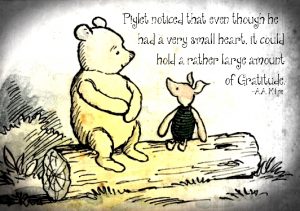
Philosopher David Hume (1739) wrote, “Of all crimes that human creatures are capable of committing, the most horrid and unnatural is ingratitude
Research on Gratitude and its impact on overall well being
There has been a debate since the time of Socrates that grateful people are happy or happy people are grateful that is end list. However various reports have shown that gratitude is good for mental and physical health.
In 2015 Mills in his studies has shown that gratitude certain lowers down blood pressure, decreases stress, and improves sleep. Even studies supports that regular practice of gratitude can lessen symptoms of depression and anxiety.
Activity: Gratitude Jar

The gratitude jar is a stunningly simple exercise that can have profound effects on your well-being and outlook.
Material
The activity gratitude does four things:

A preeminent scholar Robert Emmons (2010), makes the argument that gratitude allows a person to:
The researchers analyzed their findings to figure out how gratitude has these effects. Gratitude research is on-going by experts worldwide.
When gratitude fails

Though it’s very easy to practice gratitude however there is a barrier which could block our overall well-being i.e. ‘Ingratitude’. Emmons (2013) offers the following characteristics of ingratitude:
Gratitude among children

In 2008 Hussong shared the study of development of gratitude among children focusing on the complexity of construction of gratitude.
Children often learn manners and social conformity from their parents and society. Inherently, children are more apt to express gratitude without even prompting, which is shared in the research. So it’s confirmed that gratitude is a trait which grows like any other cognitive components. We learn the ‘how’ as we develop but knowing that appreciation for one another may be instinctual is fascinating.
It is essential to teach the trait of gratitude in children however there is a need of awareness to do so. Powerful interventions are immensely needed to integrate the behaviors of gratitude among children. The more choices one has to practice gratitude, the more likely they are to make that choice to continue mining for appreciation.
Gratitude @ workplace

Researcher Amie Gordon (2019) identified four myths about being grateful at work through scientific inquiry. The myths and truths are:
It is also essential for adults to understand that satisfaction with life can exist without the effective state of gratitude as well, but typically, this occurs when a successful person has no concept of that success being attributed to anything external. So the higher the level of the experience of gratitude as an emotion, will reflect on higher levels of positive affect.
Positive Psychology Coaching

It is substantiated by enough research reports that regardless of who you are, or the circumstances of your life, the health benefits of gratitude are undeniable. However just take some time to ask yourselves what activities do you commit to implement these subtle emotions in our hectic lifestyle to realize the health benefits of gratitude?
Merely stating ‘thank you’ is not enough to practice connective gratitude for achieving the state that improves well-being rather it’s important to understand the awe and its contribution to our physical and mental well being.
Now let’s understand when we decide to join a fitness program we start with a baseline in mind. When beginning an exercise routine, one might want a baseline from which to start their fitness improvement.
Similarly beginning a well being plan should be no different. Gratitude is an emotion and knowing one’s current level of gratitude gives this same type of baseline from which to strive for improvement. Positive psychology can measure to understand the level of this positive emotion in various situations in our life.
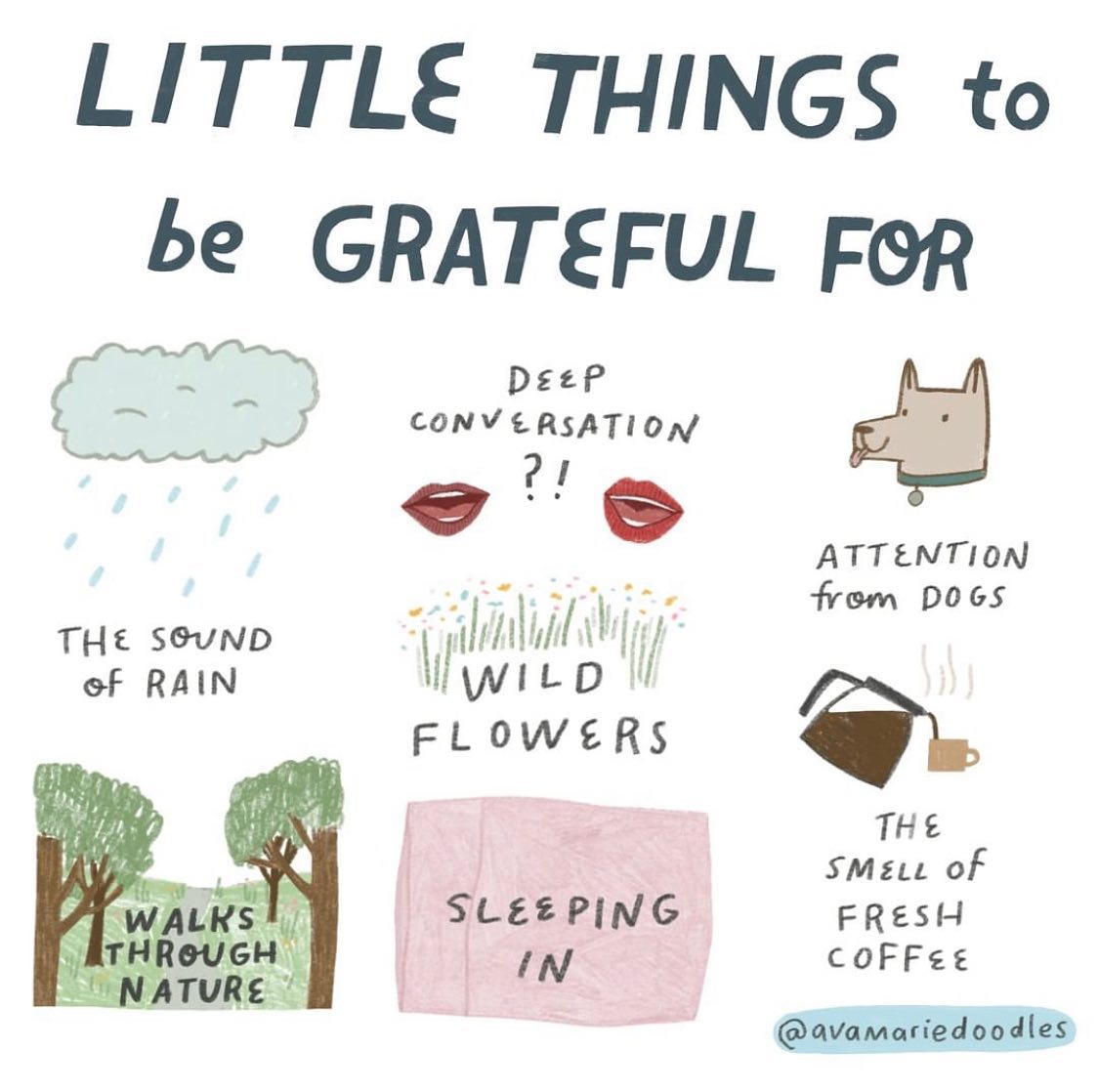
As a Positive Psychology coach we have designed coaching programs ‘(Re) Discover Your Purpose, to increase the level of mental well being through a systematic and scientific based model of PERMA (the parameters of well being). This program will make gratitude a lifestyle, and will build the mental muscles that show up as positive emotions. Additionally, It’s essential for our children to get empowered through such intervention because measuring gratitude shows a sort of moral barometer.
In other words, people who can feel gratitude regularly are more satisfied with their lives. Connect with us to enjoy the coaching program ‘(Re) Discover Your Purpose.
What Are Self-Limiting Beliefs?
We all have some assumption and perceptions which we integrate in our belief system and further nurture them deeply. Eventually these thoughts become our belief system and unknowingly become a part of us.
However when there are some believes which limits our pace and range of abilities. They are strong enough to hold us back from achieving what we are truly capable. Such assumption could be termed as “self- limiting”.
What is a belief?
A belief is a feeling of certainty with some reason, and a strong story which we choose to tell ourselves all through our life unconsciously with some substantial proof to support it. Over a period of time we keep collecting heaps of proof as we keep searching for it to further validate our belief. These “self limiting” belief is self sabotaging.
If such believes has the power to limit our capacity, then it could play a vital role in nurturing as well. So we have the choice to either create opportunities or limitation for ourselves, with our powerful belief system.
How do they come?
These thoughts are those which we use to talk to our self. So they often come in our everyday language:
For example, “ I always need to struggle in life” “I am not a creative person”, “I am very bad at networking”, “I am not an entrepreneur material”, or “I can never be a good leader”
Our self limiting beliefs make every task as if we are pushing a big rock from our way. On the contrary when we have empowering believes, our journey to achieve them becomes effortless. It’s essential to become aware of what our beliefs are.
Which are those believes?
Human beings have a beautiful tool called “communication” and we use it to the fullest. Sometimes it could be difficult to identify these thoughts as we could package them very smartly. Few common human limiting believes are:
I don’t have time
It is said when we use a statement multiple time, our brain starts believing it even if it is false and responds accordingly. Then certainly it will be impossible for us to find time to do anything. A very common example is that we all have 24 hours however some of us achieve more than others.
Tool:
I cant
This is the most common self limiting belief that has the power to tie us completely. Additionally we help ourselves by repeating the thought to make sure even our unconscious mind listens to it loud and clear.
Tool:
I can’t because I am not
There are certain words in our vocabulary which helps us to identify our thoughts with our self better. Such believes are called identity belief and one such word in our vocabulary is “I”.
Tool:
I will be judged
We are often fearful of the thought “What people will say ?“ In these situations we focus more on our fear which overpowers us with showing us examples of more people judging us. Each time this thought comes, we must acknowledge that more often these are our own thoughts than other.
Tool:
As a coach we work toward simplifying the complication of identifying limiting behavior in various day to day situations. Often it could be overwhelming to target your own self limiting belief as we identify too closely with them to view them as our limitation.
In Positive Psychology we use scientific tools to identify your strengths to handle this situation. These specific strengths are those, which will be the core tool in your “self devised action plan”. Sometimes even temporary suspension of a limiting belief is enough of a step forward to unblock the mind.
The PERMA model in positive psychology will enable you to identify the limiting behavior, stretch the boundaries imposed by limiting believes and will take you closer towards your goals/dreams.

Jane is a digital marketing professional working in a Swedish company. She has been working with the company for last 8 years and has been moving very fast in her career journey. She is a go getter and now in such short time she has started managing a team as well.
Now suddenly the company has been taken over by an American giant. They brought in lot of money, new expansion plan. However with this they have their own plan of cost cutting as a well. Under this plan they identified 15 senior and middle level employees as financial load and would be replaced by less experienced employees.
Jane has been identified as one of them. It seemed to her an absolutely harsh decision of life. All her colleagues and team members were in discussion of an injustice done to her Jane.
Jane is not able to hear anything. She is only able to hear her inner voice which is asking lot of questions to her.
There are multiple thoughts which come to your mind. It does not wait for your command. They just keep coming one after another. They come as strong inner voice….

All this inner voice is changing all her emotions as well. Suddenly from a confident, strong and fearless professional, she is experiencing a whole lot of new range of emotions like…

The day of exit came and Jane is surrounded by people. All are old colleague and they feel for him. They are showering him with suggestions, techniques, wishes and lots of positivity. Everybody’s parting lines were ….. ‘Stay positive’.

which are a combination of negative and also positive as she has always been very positive but the load of negative is too high in this condition. In this condition Jane asks herself….…. I need to be positive but how do I do it?
The phrase ‘Stay Positive’ is often used very loosely and in it is unclear to most of us how to practice it especially in our day to day life whether personal and professional.
We are still living in the illusion that if we do some yoga sessions, some meditation session, use ME time, talking positively, feeling happy , then we could stay POSITIVE.


Is it enough?
Do we just need to do so little to be POSITIVE?
With all this can we maintain our emotions and be positive for a long time?
We have heard this story so many times and lets hear it one more time….

The elder brother was a drug addict, and a drunker, who frequently beat up his family. The younger brother was a successful businessman who was respected in society and had a wonderful family. Some people wanted to find out the difference in attitude, though they belonged to the same parent. So decided to go to the bothers themselves and know the reason.
The elder brother was asked: How come you do what you do? You are a drug addict, a drunker, and you beat your family. What motivates you?
Elder brother replied: My father
They asked: What about your father?
Elder brother Replied: My father was a drug addict, a drunker and he used to beat us. What do you expect me to be? That is what I am.
They went to the younger brother and asked the same question.
People asked: How come you are doing everything right? What is your source of motivation?
The younger brother replied: My father. When I was a little boy, I used to see my father drunk and doing all wrong things. I made up my mind that, that is not what I wanted to be.
Both were deriving their strengths and motivation from the same source but one was using optimistic thinking style and another was using pessimistic thinking style.
Learning: We evaluate all situations in our life through our thinking style. Either it could help us to view choices and possibilities which will have the power to change the situation for better. Or we could choose to remain in the same situation because we resist change and reluctant to see the choices. There is deep connection between our thinking style and behavior (action)

So what is this mind set?
Its growth mindset defines: abilities and understanding can be developed. Those with a growth mindset believe that they can get have more opportunity, possibilities as their intelligence in ever growing and talent is to put all of them at the right time.
Whereas fixed mindset defines the importance of old learning, abilities and intelligence which is often believed to be permanent and sufficient in ever changing situations.
The main difference between the two mindsets is one beliefs that intelligence and ability is permanent and with little to no room for change. However the other mindset believes it to be changeable, with opportunities for improvement (or, for that matter, regression).

Out thoughts build our mindset and the self talk play a very important role in this. There are certain statements we use to communicate with ourselves. We often make the mistake of thinking, these are just common thoughts which we have but they are reflection of our fixed mindset …
Examples of Growth mindset
Among students :

However this certainly does not mean that adult cant display their growth mindset as they are often not in constant learning environment. Its not true. In-fact every day we adults face situations which display our growth or fix mindset clearly.
I will like to share specific examples of John Rhodes (2015) who shared certain scenarios to show growth mindset in adults:
Among Adults
Imagine you are in for a performance collaboration meeting with your boss and you receive negative feedback.

As a receiver you could think that your boss has no idea what she’s talking about and completely ignore the feedback. You displayed fixed mindset response.
Alternatively, you could consider this feedback, evaluate it as objectively as possible, and seek out more information and/or another opinion to compare. All this will help you decided whether feedback is ration or not. Then you are good to take further steps. You have showed growth mindset response.
Another possibility is also to review how you could view your performance with more clarity with the expectation of the management and implement them.
Among Parents
Rhodes offers a good example of a growth mindset in a parent:
“Kids love praise and parents love giving it. So, when you’re child comes to you with an A on his math paper.

The difference between the these responses lie in including positive emotion in the growth mindset and acknowledging their hard work rather than just saying, “ You are smart.”
The common mistake is to think that a mindset shift will happen automatically and being optimistic is growth mindset. It’s a myth.
However we might be confused to understand how do I know whether I am of which mindset? Can I do a mindset shift? Can I increase the level of growth mindset in my regular scenario?
Positive Psychology is a scientific approach to change mindset which is measurable, actionable and visible.

Connect with us to know more about this journey.

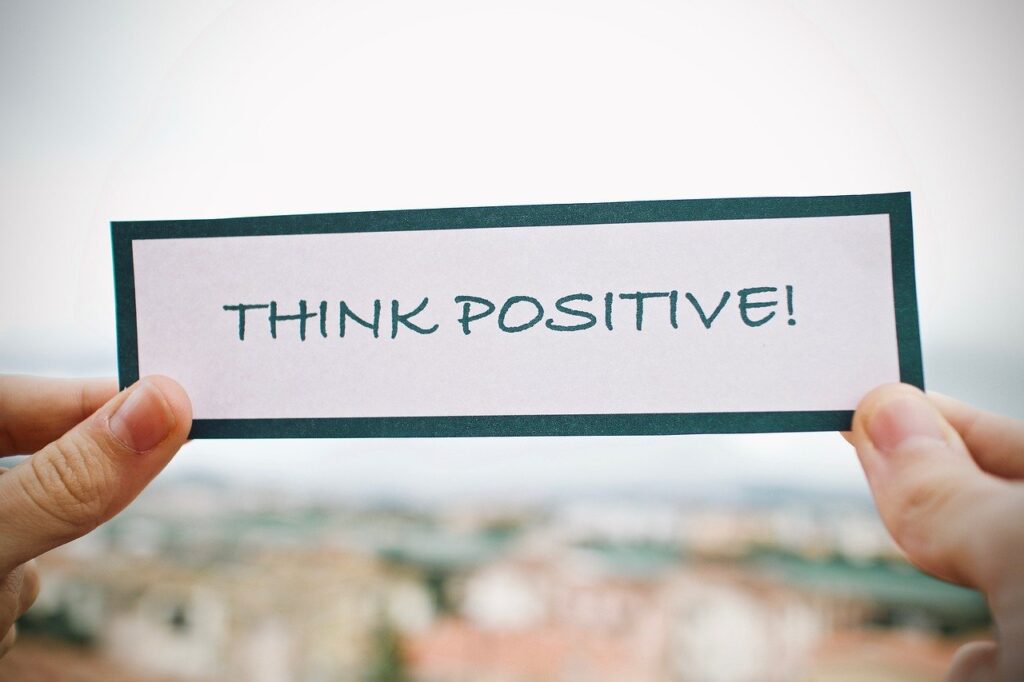
The phrase Keep Yourself Positive is often use very loosely and it could be little confusing to understand, especially when it is associated with our life.
Most of the research shows, negative is more powerful than positive. So often human beings get impacted by negative events/ thinking than by positive events and incidents. Negativity is strong and it largely hijacks how we feel, think, and act.
We could overcome this feeling by filling it up with positive thinking bit being positive could be a difficult task for anybody. For instance we are clueless to this simple question ‘what qualities I should have to be positive? Or ‘how could I control negative thoughts”
If so then we must define the word ‘Positive’. It means ‘well being’ and we need to establish well being in certain areas of our lives which could be easily understood by the acronym: PERMA which includes…
However we must agree, to achieve ‘well being’ we must understand the process closely. Let’s take an example to understand the process better.
Imagine you want to loose weight. What are the simple steps you would follow?
Finally when you follow this regimen for a period of time (4-6 months) you would be able to achieve visible changes in yourself. Everybody else could also see the change in you and you will be flooded with compliments. In fact even to maintain that change you need to follow \the same regime.
Similarly keeping ourselves positive is for our mental health and even this need a regime which must be followed in the same manner for a period of time to have visible change.
To achieve a certain level of ‘mental well being’ and to retain that level, we must do some activities which need to be practiced just like our physical activities.
Our physical fitness plan often comprises of a series of exercise targeting different body parts. Similarly ‘PERMA’: model of positivity, are the five targeted areas identified for mental well being.
What
Emotions are not static. Usually they are driven by situation. So if I ask you ‘how do you feel’ you will respond as per your mood which is dependent on the situation. Emotion is never static.
How
So ‘what is it that makes us feel good?’ it is an important part of this factor. We must focus on situations to have positive emotions so that you could experience them often. However many of us has the tendency of expecting worst but we could certainly cultivate positive thinking which helps us to create opportunities for positive emotions.
What
It is common to feel bored and this could only be replaced by an activity which would engage us constructively. The power of the activity should be such, that you could completely absorb yourself in that. This state is termed as ‘flow’.
How
To be in the state of flow it is important for us to identify and cultivate our personal strengths and talents. When we indulge ourselves in such activities, it increases our confidence, sense of importance, and enhances our mental state.
Human beings are social animals. Our family, friends, relatives, colleagues, and neighbors are important people of our lives. The positive relationship which we maintain with them decides our well being.
How
Hence it’s extremely important to build strong relationship with these people in our lives. In addition it’s also crucial for us to recognize a healthy and unhealthy relationship and take appropriate action whenever needed. Balance is the key to maintain relationship.
What
Human beings are capable of thinking big. We can align ourselves for a larger cause which adds value to our life. The cause could be: social, religious, spiritual, political or any other creative cause.
How
It’s good to identify a cause for yourself, connect with people of similar interest and start working towards your goal. This will add meaning to the landscape of your life. However it is equally possible for you to find the same space in your professional and personal life as well.
What
We often associate achievement and accomplishment with economics and power but we have also heard elders saying “winning is not everything but participating is important.” Which means the process should also be enjoyed.
How
Set your goal; keep your focus, set milestone for greater success. Along with it develop skills of resilience to handle failure and setbacks. No journey of success is complete without failure and one must keep going. .
In Positive Psychology coaching plays an important role. It always encourages you to identify strength, set goal, and sharpen your strengths to reach your goal. Regular coaching is a great way to accomplish you goal.
Use these Well Being Exercise’ to keep yourself positive.
We keep cleaning our house in almost all the seasons but we forget to do the same activity with our life. Its a goal setting activity for your quarterly goals.
Steps:
You could use your creative skills to deign it well and post it in a visible place of your house.
We often look for miracles outside our life and forget to look into our lives. So let’s collect those miracles….
Steps: Take a notepad and make entries
The miracle diary is a great mood lifter tool when you need a dose of positivity in certain low days of your life.
Note: It a great activity for the children to practice as well.
Background: Do you feel stressed and harassed during the day, like you’re always doing things to please others rather than yourself?
Part of being an adult is learning to put the needs of others, such as our children or employer, ahead of ourselves. In this process we loose touch with ourselves. If we stop listening to our heart, eventually we won’t recognize it. Then we wonder why our life is so dry and meaningless! We need to re-open the conversation with our heart .
Steps:
When you’re feeling stressed, write two questions to ask yourself:
Then write down….